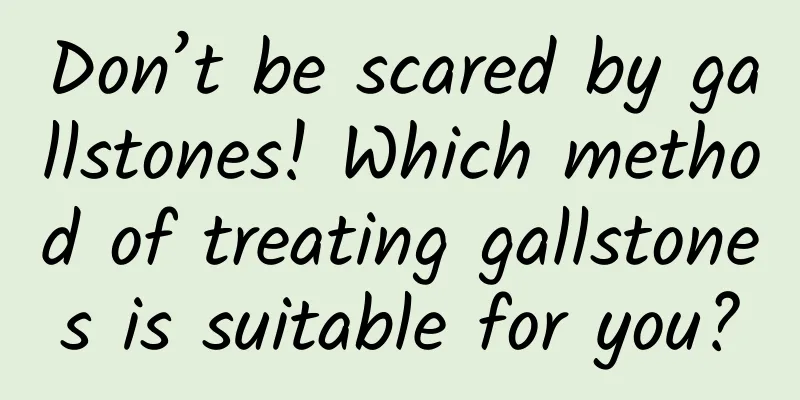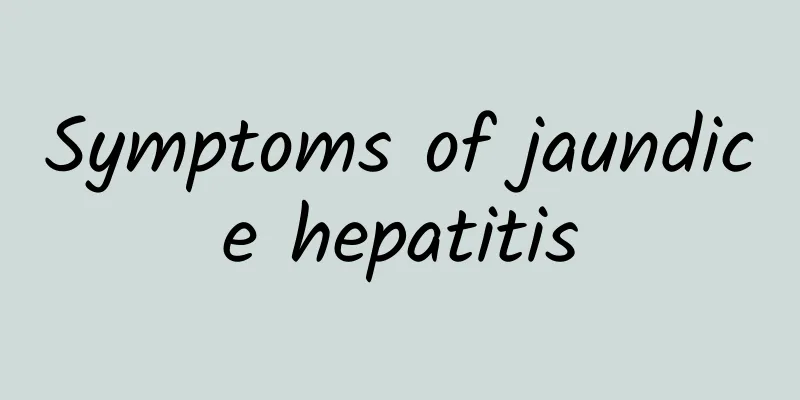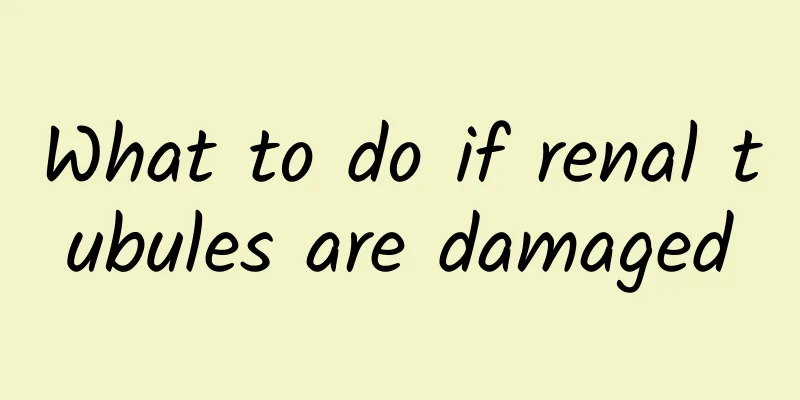Don’t be scared by gallstones! Which method of treating gallstones is suitable for you?

|
Gallstones, also known as gallbladder stones, are a particularly common disease, and the incidence rate increases with age. There are no obvious symptoms in the early stages of the disease, so it is particularly easy to be ignored and difficult to diagnose. If you find any disease, you must seek medical treatment promptly. At present, the treatment for gallstones is mainly divided into drug treatment and surgical treatment. 1. Drug treatment Category 1: Antispasmodics. Antispasmodics achieve the effect of pain relief by relaxing and relieving spasms. Category 2: Antibiotics. Gallstones are mostly accompanied by infection, so it is necessary to use antibiotics to reduce inflammation. Category 3: Litholytic drugs, which regulate the level of cholesterol in bile. They are only effective for cholesterol gallstones, but not for calcium salt stones. It is best to check the effects of this type of medication every 3 months. 2. Surgical treatment The first type: gallbladder-preserving lithotomy. If the patient's gallbladder function is good, there is no inflammation, and the number of stones is small and of moderate size, the doctor may consider removing the stones and leaving the gallbladder. Some data show that the 5-year recurrence rate of cholecystolithotomy is as high as 37%-45%. The second type: cholecystectomy. For patients with a large number of stones, gallbladder wall thickening exceeding 3mm, and chronic cholecystitis, doctors may perform cholecystectomy. Patients may experience nausea, abdominal distension, diarrhea, greasy stools, etc. within six months after the operation. Until the bile duct expands to replace the gallbladder, digestive function returns to normal! The third method: open common bile duct to remove stones and T-tube drainage. What if the stones happen to grow in the common bile duct and block the traffic? Surgical incision of the common bile duct to remove the stones. During the recovery period of the common bile duct, bile is prohibited from passing, but bile cannot accumulate, so a rubber T-tube is placed to drain the bile out of the body. After 2 to 3 months, the common bile duct is fully healed, the rubber T-tube is removed, and bile can flow freely! Whether you choose drug treatment or surgical treatment, you must consider your actual condition and carefully choose the treatment method that suits you to be effective. |
>>: Why do my eyes hurt when I put in eye drops?
Recommend
What causes acid reflux after meals?
We have all experienced it. Acid reflux after meal...
Eucommia pictures and effects
In our daily life, Eucommia ulmoides is a common ...
How much do you know about the secret of health and longevity?
1. Replenish water Have you found that your memor...
What to do with internal hemorrhoids and anal fissures? Chinese medicine remedies are effective
In modern life, many people suffer from hemorrhoi...
When should tetanus be given?
In the course of one's life, one will always ...
What are the effects and functions of Danpi
Danpi is also called Danpi. It is a Chinese medic...
Side effects of dried ginger and licorice soup
Chinese medicinal materials are the spiritual wea...
How to treat acne
Closed comedones, also known as whiteheads, are a...
Symptoms of calcium deficiency in two-month-old babies
Two-month-old babies are very delicate. If they a...
Can I breastfeed while taking anti-inflammatory drugs?
You should not use drugs indiscriminately while b...
What are the signs of anorexia?
Anorexia is a relatively common disease, which is...
What to do if you have vomiting due to poor stomach function? Massage and diet are more effective
In modern life, people are under tremendous press...
How to eat Chuanbei for better cough relief
Chuanbei is a relatively common Chinese medicine....
Stomach knot and can't defecate
The human body excretes every day. It is normal t...
Insufficient blood flow to the heart
Insufficient blood supply to the heart is a very ...









